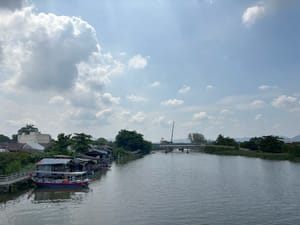IN SOUTH SEBERANG PERAI’S southernmost region lies a small town at the Penang-Kedah-Perak border. Named for the town’s dense–tebal–nibong palm tree forests, this is Nibong Tebal.
To the Chinese community, Nibong Tebal is known as 高渊, or ko-ean in the local Teochew dialect, which is both a transliteration of the Kerian River that runs through the town and a reference to the said river’s deep currents. Unlike Penang Island, where the predominant Chinese dialect and culture is Hokkien, Nibong Tebal stands in contrast as a unique consolidation of Teochew culture and heritage.
Nibong Tebal was established during colonial times as the administrative capital of Southern Province Wellesley.[1] Alongside Bukit Mertajam and Butterworth, which were the administrative capitals of their respective districts, Nibong Tebal became the centre of trade and communication in the region, necessitating an intra-state railroad link, which began operating in 1902.[2] Reconstructed in 2010, the Nibong Tebal railway station is now part of the KTM West coast railway line, which connects passengers from Singapore to Thailand in a continuous route that spans 1,151km.
Thanks to the Kerian River Basin, Nibong Tebal has long boasted a fertile, water-rich landscape. Affected both by migration and by trade, its culture, history and politics have been undeniably agrarian.




